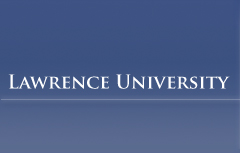Document Type
Article
Publication Date
9-22-2020
Abstract
No Mow May is a community science initiative popularized in recent years that encourages property owners to limit their lawn mowing practices during the month of May. The goal of No Mow May is to provide early season foraging resources for pollinators that emerge in the spring, especially in urban landscapes when few floral resources are available. We worked with the city council of Appleton, Wisconsin, USA. to allow No Mow May to take place in May 2020. Four hundred and thirty-five property owners registered for No Mow May in Appleton. We measured floral and bee richness and abundance in the yards of a subset of homes (N = 20) located near regularly mowed urban parks (N = 15) at the end of the month. We found that homes that participated in No Mow May had more diverse and abundant flora than regularly mowed green spaces throughout the city. No Mow May homes had three times higher bee richness and five times higher bee abundances than frequently mowed greenspaces. Using generalized linear models, we found that the best predictor of bee richness was the size of the designated unmowed area, and the best predictors of bee abundances were the size of the unmowed area as well as floral richness. While our findings cannot conclusively attribute increases in bee abundances and richness to the No Mow May efforts, our data does show that bee pollinators make use of no mow spaces as key floral resources during early spring in the upper midwestern United States. A post-No Mow May survey revealed that the participants were keen to increase native floral resources in their yards, increase native bee nesting habitat, reduce mowing intensities, and limit herbicide, pesticide, and fertilizer applications to their lawns. The No Mow May initiative educated an engaged community on best practices to improve the conservation of urban pollinators in future years.
Department
Geosciences
Department
Biology
DOI
https://doi.org/10.7717/peerj.10021
Recommended Citation
Del Toro I, Ribbons RR. 2020. No Mow May lawns have higher pollinator richness and abundances: An engaged community provides floral resources for pollinators. PeerJ 8:e10021 https://doi.org/10.7717/peerj.10021

Comments
First published in PeerJ Life and Environment